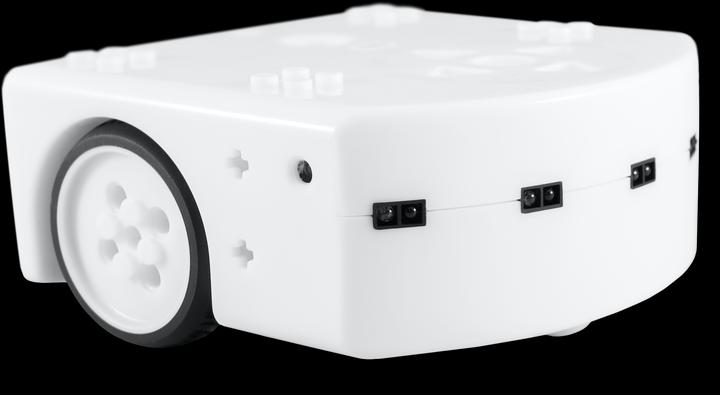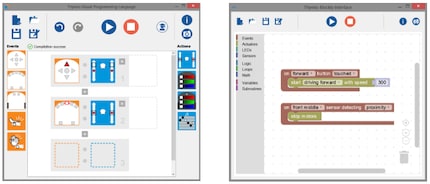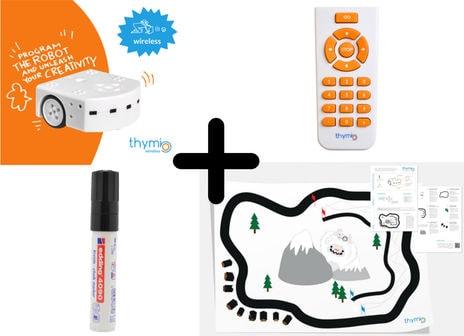
Thymio balances on a ball
In the first two parts, Oli showed us projects for beginners and advanced users. In the third part, we now get down to the nitty-gritty: the most difficult level of the graphical user interface allows even more control options.
If you missed the first two parts, you can find the articles here: [[marketingpage:2780]] [[marketingpage:2954]]
In contrast to the visual programming, Oli uses the "Blockly" interface in the third part. Once again, the desired function blocks are dragged and dropped into the project. However, this is actually already a very simplified text programming method.
With loops, variables and mathematical functions, the possibilities are almost as unlimited as if you were typing yourself. "Blockly" simply helps you to put together the right options like a puzzle and prevents illegal operations that would cause programme errors.

Thanks to the Thymio inventors' open-source approach, which invites you to participate, there are countless articles from the Community on what else you can do with the robot. Oli has picked out a particularly interesting example: Thanks to its tilt sensors, the Thymio can recognise when it is tilted to one side. The programme "Balancing on a ball" makes use of this. As soon as a tilt is registered, the robot activates its motors and moves "uphill" - until the sensors report 0.
Schoolchildren, adults, in short: all fans of the Thymio have come up with many more applications. I particularly like the lovingly documented and cleverly realised Thymio paddle boat: together with an old Playmobil boat and some Lego blocks, the Thymio is converted into a propulsion system. Thanks to the remote control, this is a great project for all bathtub pirates.
More about robotics & learning
I'm the master tamer at the flea circus that is the editorial team, a nine-to-five writer and 24/7 dad. Technology, computers and hi-fi make me tick. On top of that, I’m a rain-or-shine cyclist and generally in a good mood.
Interesting facts about products, behind-the-scenes looks at manufacturers and deep-dives on interesting people.
Show all